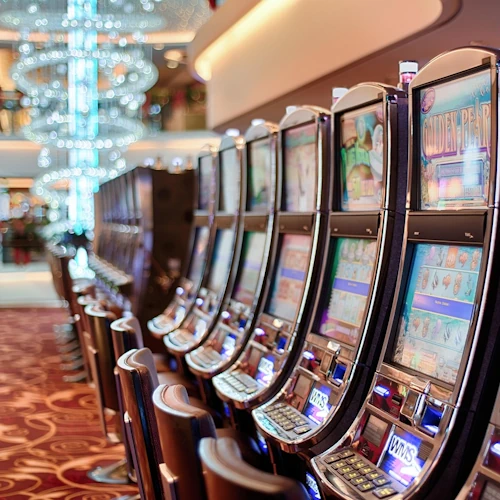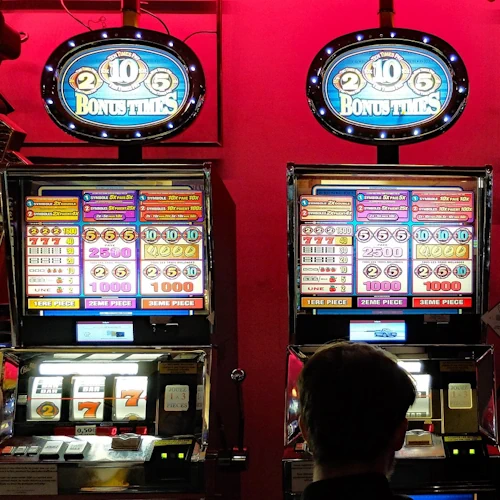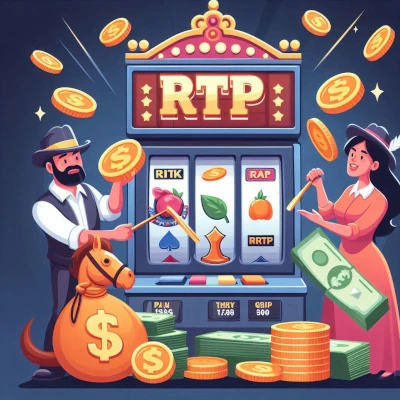Progressive Jackpots Explained: Seed Increment and Trigger Types in Plain English
October 5 2025

Progressive jackpots are one of the most exciting features in modern slot games, yet many players don’t fully understand how they work. Beneath the flashing meters and climbing numbers, these jackpots follow clear rules. Knowing how a progressive jackpot grows, resets, and pays out can help you enjoy the feature without misconceptions about guaranteed returns or easy wins.
Progressive jackpots are prize pools that grow as players wager, with a portion of each bet feeding a shared meter. When someone wins, the prize resets to a starting amount and begins climbing again. Unlike fixed jackpots, they can rise unpredictably, but reset after any hit.
Of course, before you go choosing a slot or bonus feature for your evening’s entertainment, it’s worth knowing more about what you’re likely to enjoy and which games you should explore. How to Choose the Perfect Game for Your Gaming Style shows how different mechanics suit different players — useful context when picking a slots game, jackpot-based or otherwise!
Seed Values and Increment Rates
Two terms help explain how the meter behaves: seed value and increment rate. The seed (or reset) value is the minimum amount the jackpot returns to after a win. For example, if a progressive jackpot shows a $10,000 seed, the next round will begin at that figure even after a payout. This seed is usually funded by the game provider or operator to ensure the prize never starts at zero.
The increment rate is a small percentage of each bet that fuels the jackpot’s growth. Higher rates make the pot climb faster with more play, while lower rates grow slowly but can still reach large sums if the game is popular or widely played.
Reading Jackpot Panels Like a Pro
When you’re playing these games, it’s wise to treat the jackpot panel like an instrument cluster and the rules page like a spec sheet. Start by locating the meter label, the reset (seed) value, and any notes about how the pot grows — for example, "a small percentage of each wager contributes" to the meter.
Next, look for trigger language: some titles award a progressive jackpot at random on any spin; others require specific symbols or a bonus wheel. You may also see time-capped "Hot Drop" variants that add a deadline by which the pot must pay. At Cafe Casino, Hourly Jackpots must drop every hour and Daily Jackpots must drop once per day, while an Epic Jackpot can trigger at any time. These add urgency without guaranteeing any individual spin.
To see how labels and meters are arranged in a real lobby, you can review a Progressive Jackpot Slot page, paying attention to reset amounts, contribution info, and trigger notes. Looking at the information about Progressive Jackpot Slot options helps you build a mental template for comparing new titles. Once you know where to look, you can quickly confirm the meter’s starting point, growth rate, and trigger mechanism before you play. This approach isn’t about predicting wins; it’s about playing with clear expectations and avoiding confusion about how the pot behaves.
Timing and Session Planning
Once you understand the panel, you can pace your play better. While there’s no way to predict a win, knowing the best times to play slots based on game traffic or jackpot cycles can shape your experience. Resources like Happy Hour Special: Best Times to Play Slots explain how peak activity can influence meter growth, and give tips for session planning.
Time-capped "Hot Drop" jackpots must pay before a set deadline, such as hourly or daily. The exact moment is random, but interest rises as the clock runs down. If you play near a time cap, set a budget and clear expectations — the pot can still drop to any eligible spin.
Progressive Info Panel Checklist
- Check the seed value (reset amount after a win).
- Confirm the increment rate or contribution percentage.
- Read how the jackpot is triggered (random, symbol, wheel, or other feature).
- Look for time-capped Hot Drop notes if present.
- See if the game uses a single-site or networked pot (often shown in the rules).
- Verify whether multiple tiers exist (Mini, Major, Mega).
- Review any bet requirements for jackpot eligibility.
- Find details on payout timing after a hit.
- Look for responsible play information or links.
- Bookmark the game info page if you plan to revisit it.
Trigger Types and Why They Matter
Progressive jackpots can trigger in three main ways:
- Random event: Any spin at any stake level might unlock the prize.
- Symbol-based: Specific symbols or combinations launch the jackpot feature, often via a wheel or bonus round.
- Time-capped must-drop: The pot must pay before a deadline, adding urgency but not certainty about who will win.
Knowing the trigger type matters because it shapes your session flow. Random triggers mean any spin can pay, regardless of symbols. Symbol-based triggers reward watching for specific icons or bonus modes, but still remain chance-driven. Time-capped jackpots offer the most visible pacing element — the clock — but should never be mistaken for a guarantee.
For a deeper look at why certain players gravitate toward specific reward systems, Video Games and Personality Traits: A Deep Dive into the Science of Gaming Preferences explores how personality influences game choice and enjoyment — helpful context if you’re refining your own slot or casino game picks.
« BACK
 22Bet Casino
22Bet Casino

 Stake Casino
Stake Casino

 Betsafe Casino
Betsafe Casino

 Betsson Casino
Betsson Casino

 Winz.io Casino
Winz.io Casino

 Videoslots Casino
Videoslots Casino

 FortuneJack Casino
FortuneJack Casino

 Betlabel
Betlabel

 1xBet
1xBet

 Hell Spin Casino
Hell Spin Casino








